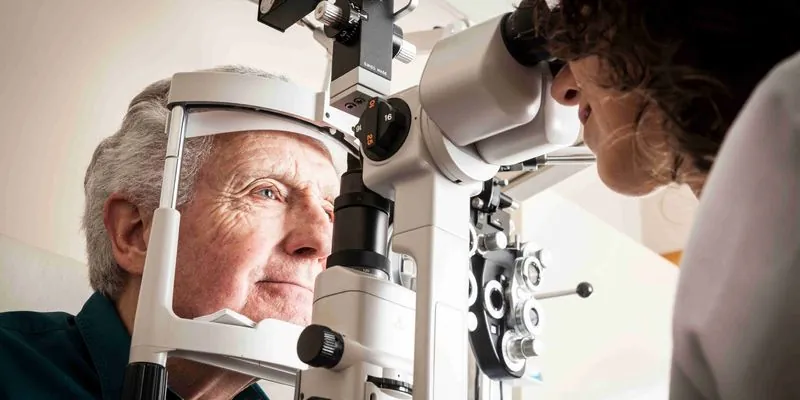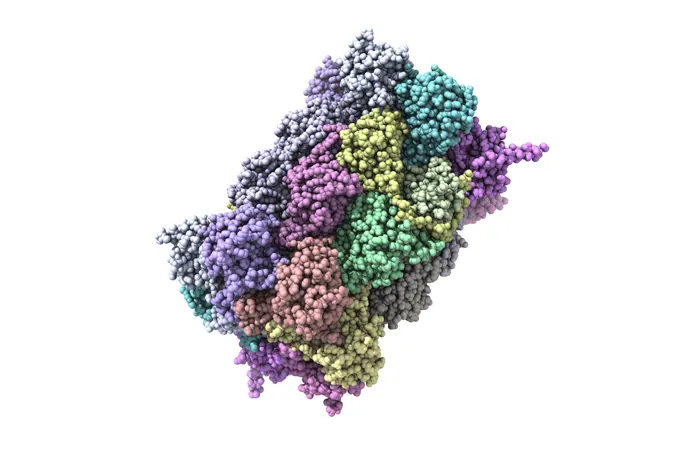
Groundbreaking Eye Drops Target Blindness with Anti-Amyloid Approach
2025-06-05
Author: Ming
A Simple Tool for Complex Eye Changes
The Amsler grid, a straightforward piece of paper with black gridlines and a central dot, plays a crucial role in tracking eye health. Ophthalmologists use it to detect alarming signs of visual decline, such as wavy lines or blank spots in patients' vision, which can indicate serious retinal conditions like age-related macular degeneration (AMD).
A Looming Threat: Age-Related Macular Degeneration
AMD is a progressive eye disease that affects millions. According to research, nearly 12% of Americans over 40 show early symptoms. This condition evolves from an asymptomatic stage, where yellow deposits called drusen appear beneath the retina, to a late stage characterized by irreversible vision loss.
Drusen: The Silent Protagonists
While drusen themselves don't cause blindness, they harbor clues about the disease's mechanisms. Alarmingly, researchers have discovered beta-amyloid, a protein notorious for its role in Alzheimer's disease, within drusen. This has prompted intriguing comparisons between the pathologies of AMD and Alzheimer's.
A Revolutionary Clinical Trial
Dr. Hermann Russ, co-founder of Galimedix Therapeutics and the Chief Scientific Officer, believes targeting toxic beta-amyloid presents a revolutionary approach to treating AMD. The company recently commenced a Phase 2 clinical trial to evaluate their new eye drop, GAL-101, which aims to curb the harmful effects of beta-amyloid.
The Vision of AMD Treatment Evolution
For years, ophthalmologists have recommended nutrient supplements to mitigate AMD progression. Although injections targeting vascular growth factors have been effective for wet AMD, addressing late-stage dry AMD remains a challenge.
Challenging the Norm: GAL-101's Unique Mechanism
Unlike previous treatments that focused on already-formed plaques, GAL-101 aims to bind to individual beta-amyloid proteins before they become toxic. This groundbreaking strategy could reshape the landscape of AMD treatment, targeting the root cause rather than the aftermath.
A Hope for Earlier Intervention
The Phase 2 trial will include participants over 55 with geographic atrophy from AMD. The objective is clear: assess not just the drug's efficacy but its potential to halt the progression of AMD before irreversible damage occurs.
Beyond AMD: A Future for Other Neurodegenerative Diseases?
There are hopes for GAL-101 beyond AMD. Dr. Russ envisions it as a potential treatment for glaucoma, where neuroprotection may one day provide a solution for another leading cause of blindness.
A Mixed Response from the Ophthalmology Community
While some ophthalmologists, like David Fleischman, remain cautiously optimistic about GAL-101, the urgency for robust clinical evidence remains. The innovation shown by Galimedix Therapeutics represents a beacon of hope amid the ongoing battle against vision loss.





 Brasil (PT)
Brasil (PT)
 Canada (EN)
Canada (EN)
 Chile (ES)
Chile (ES)
 Česko (CS)
Česko (CS)
 대한민국 (KO)
대한민국 (KO)
 España (ES)
España (ES)
 France (FR)
France (FR)
 Hong Kong (EN)
Hong Kong (EN)
 Italia (IT)
Italia (IT)
 日本 (JA)
日本 (JA)
 Magyarország (HU)
Magyarország (HU)
 Norge (NO)
Norge (NO)
 Polska (PL)
Polska (PL)
 Schweiz (DE)
Schweiz (DE)
 Singapore (EN)
Singapore (EN)
 Sverige (SV)
Sverige (SV)
 Suomi (FI)
Suomi (FI)
 Türkiye (TR)
Türkiye (TR)
 الإمارات العربية المتحدة (AR)
الإمارات العربية المتحدة (AR)